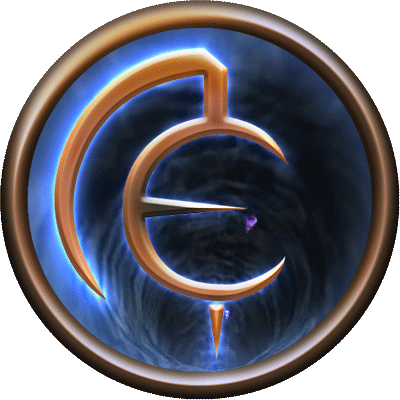If we theorize that the universe is like a computer program, then maybe the Universe has several layers of abstraction and we only can access the our current layer and therefore forever having an incomplete model. If something external to our layer is affecting it, it would probably be impossible to know.
Stupid Java-ass AbstractUniverseControllerFactoryBuilderSingleton reality we live in.
Quantum mechanics (and spin) isn’t really mysterious or inaccessible, it’s just not intuitive.
How about dark matter and dark energy.
Additional variables introduced to make current theoretical models fit the observed data.
The idea behind dark matter is pretty easy to understand and not that mysterious. Something doesn’t interact with the EM force so it’s just invisible and passes right through things. Since there’s plenty of examples of field specific quanta, it’s not really an out there idea.
Angular momentum of particles requires math and theories that require too much effort for me to understand them.
The name was too cool. If they called it something super long like Non-electromagnetic interacting granular happening (NEIGH) we would all say it’s too confusing and I don’t understand, as opposed to “I get it and it must be wrong for reasons so simple a layman has thougnt of them.”
Actually that does have a confusing name: Weakly Interacting Massive Particles. WIMPs. Yes, really.
It’s a common misconception that Dark Matter = WIMPs because it’s the leading theory right now. Dark Matter really just means “whatever happens to be the cause of certain cosmological measurement discrepancies” even if that cause isn’t in any way “matter” at all. It’s a very misleading name.
So in short, it all make sense in math, but when you try to convert it into actual words it doesn’t make sense or it’s so difficult to understand that unless you know the math you can’t understand.
Precisely! Language is a tool we use to understand the world around us and english simply lacks the vocabulary to describe many aspects of physics that the language of mathematics has
Exactly!
Another one: photons are particles and waves, but really literally everything is just a wave function.
Makes absolutely no sense in words, but the math checks out.
We can’t see wave functions. It is a tool used to predict observations but itself cannot be observed, and cannot be an observable object as it exists in an abstract Hilbert space and not even in spacetime. It is only “space” in the sense of a state space, kind of like how if I have a radio with 4 knobs, I can describe the settings with a single point in a 4 dimensional space. That doesn’t mean the radio actually is a 4 dimensional object existing in this state space, it only means that we can represent that way for convenience, and the dimensions here moreso represent degrees of freedom.
If you believe everything is a wave function then you believe the whole universe is made out of things that cannot be observed. So how does that explain what we observe? Just leads to confusion. Confusion not caused by the mathematics but self-imposed. Nothing about the mathematics says you literally have to think everything is made out of waves. In fact, Heisenberg’s original formulation of quantum mechanics made all the same predictions yet this was before the Schrodinger equation was even invented.
People take the wave formulation way too literally and ultimately it just produces much of this confusion. They are misleadingly taught that you can think of things turning into waves by starting with the double-slit experiment, except it is horribly misleading because they think the interference pattern they’re seeing is the wave function. Yet, (1) the wave function is associated with individual particles, not the interference pattern which is formed by thousands, millions of particles. There is nothing wave-like visible with just a single particle experiment. (2) Even the interference pattern formed by millions of particles does not contain the information of the wave function, only a projection of it, sort of like its “shadow” as the imaginary terms are lost when you apply the Born rule to it and square it. (3) They also like to depict a literal wave moving through two slits, but again there are imaginary components which don’t map to anything physically real, and so the depiction is a lie as information has to be removed in order to actually display a wave on the screen.
The moment you look at literally anything that isn’t the double-slit experiment, the intuitive notion of imagining waves moving through space breaks down. Consider a quantum computer where the qubits are electrons with up or down spin representing 0 or 1. You can also represent the state of the quantum computer with a wave function, yet what does it even mean to imagine the computer’s internal state is a wave when there is nothing moving at all and the state of the quantum computer doesn’t even have position as one of its values? You can’t point to that wave even existing anywhere, you get lost in confusion if you try.
This cloud is described by a mathematical object called wave function. The Austrian physicist Erwin Schrödinger has written an equation describing its evolution in time. Quantum mechanics is often mistakenly identified with this equation. Schrödinger had hopes that the ‘wave’ could be used to explain the oddities of quantum theory: from those of the sea to electromagnetic ones, waves are something we understand well. Even today, some physicists try to understand quantum mechanics by thinking that reality is the Schrödinger wave. But Heisenberg and Dirac understood at once that this would not do.
To view Schrödinger’s wave as something real is to give it too much weight – it doesn’t help us to understand the theory; on the contrary, it leads to greater confusion. Except for special cases, the Schrödinger wave is not in physical space, and this divests it of all its intuitive character. But the main reason why Schrödinger’s wave is a bad image of reality is the fact that, when a particle collides with something else, it is always at a point: it is never spread out in space like a wave. If we conceive an electron as a wave, we get in trouble explaining how this wave instantly concentrates to a point at each collision. Schrödinger’s wave is not a useful representation of reality: it is an aid to calculation which permits us to predict with some degree of precision where the electron will reappear. The reality of the electron is not a wave: it is how it manifests itself in interactions
— Carlo Rovelli, “Reality is Not What it Seems”
It is more intuitive to not think of wave functions as entities at all. But people have this very specific mathematical notation so burned into their heads from the repeated uses of the double-slit experiment that it is very difficult to get it out of their heads. Not only did Heisenberg instead use matrix transformation rather than the Schrodinger equation to represent QM, but it is also possible to represent quantum mechanics in even a third mathematical formulation known as the ensemble in phase space formulation.
The point here is that the Schrodinger equation is just one mathematical formalism in which there are multiple mathematically equivalent ways to formulate quantum mechanics, and so treating these wave functions wave really existing waves moving through a Hilbert space which you try to imagine as something like our own spacetime seems to be putting too much weight on a very specific formalism and ultimately is the source of a lot of the confusion. Describing the whole universe as thus a giant wave in Hilbert space evolving according to the Schrodinger equation is thus rather dubious, especially since these are entirely metaphysical constructs without any observable properties.
It’s not that it doesn’t make sense in words, it’s more that it isn’t something we can intuitively understand. Basic physics is intuitive. Advanced physics is much less intuitive but you can sort-of get it if you use analogies to things that are understandable. Truly advanced physics is so far removed from the world we experience that you just have to trust the math.
IMO, everything being a wave is not quite pure math territory. Things like constructive and destructive interference are ideas you can understand using water waves or sound, so when concepts are explained in those terms you can sort-of get it. But, things like electron spin or quark flavours are things you just have to accept.
Ahh… hmm. In some ways it is literally inaccessible, because we can’t observe it directly. All of our experimental (e.g. real) subatomic knowledge comes from smashing particles into each other at near-light speed and observing the bits that come out, which is somewhat like dropping a smartphone off the Empire State building and trying to figure out how it works by picking up the broken pieces off the sidewalk. We can probe the structure of molecules with electron microscopes, but there are no tools for directly observing anything smaller than that. We draw conclusions for how smaller things behave through inference.
And frankly, the entire concept of spinors and the relationship to observed properties like electron charge is pretty mysterious, and nobody really understands wave-particle duality, that’s just the best explanation we have for what we observe.
Also as Heisenberg found, at a certain point things get blurry not because our instruments don’t have the technical capabilities, but because what we are looking at is fundamentally blurry.
This is basically “hidden variables hypothesis”.
You can absolutely know if something external is affecting it. Dark matter and energy might be such a thing. What you might not be able to tell is how those mechanics arise, you’ll only know the aggregate result on your layer.
“All models are wrong, but some are useful.” -George Box
The closest representation is that cliche television shot where someone’s thinking really hard and equations fly around their head.
they don’t actually spin but they’re little bar magnets as if they do. if you charge a sphere and spin it, you’ll generate exactly the same kind of bar magnet, but they don’t actually spin. and just like bar magnets, like repels like. but they’re neither bar magnets nor spinning. why don’t they spin? because they’re point masses, which don’t have any extent. but actually, you can’t really observe them as point masses because they’re waves.
^^ this was the exact point at which I said quantum mechanics wasn’t for me and I’m done with physics, after completing most of a degree. it sort of all makes sense but at the same time it completely doesn’t. it all makes sense as pure math but the second you try to make sense of the math, sense goes out the window.
It is a good demonstration of the limitations of our own thought. We understand new concepts in terms of familiar concepts. If there is no direct analogy to something familiar, the human mind is utterly lost and has to trust in rigorous analysis while only half believing what it proves.
The universe is under no obligation to be understandable to the bits of it that can think. In many ways it’s a wonder we’ve got as far as we have.
It all makes sense and the more you dig deeper the more it makes sense, but then you zoom out a little and then realize it actually doesn’t make any sense in any sort of palatable way.
yeah, I was lucky to have already taken Classical Mechanics prior to Quantum Mechanics (it wasn’t a prereq so most of my classmates jumped straight into QM), so the math was all perfectly sensible. but the second any prof started trying to use English to interpret the math, I started having these moments where I’d have to sit back and think about the words coming out of their mouths, and sitting with how it was all actually gibberish. Feynman’s “shut up and calculate” started to feel incredibly valid really fast, whereas prior to QM, I was under the impression that physics was natural philosophy. it’s not and QM was the breaking point, at least for me, personally.
We haven’t even started with quantum fields yet.
My advanced E&M professor said “Imagine a sphere of radius zero. Trust me, it works.”
“…Imagine a sphere of radius zero.”
and a spherical cow. imagining lots of spherical cows cows helps quite a bit.
Radiating milk equally in all directions, of course.
Which constantly stays as a stream but looses density with r^2 (while still being a liquid!)
Also please don’t look at it
I mean, you can but it won’t be there.
Actually, it can be there, but then you won’t know how fast it’s moving.
think of it as a camera.
if you set it up with a high speed to take a picure of a bouncing ping pong ball you will know its precise location at the moment of the shot.
if you set it up with a low speed you will see a blur of the path it took, but not a precise location.
That’s not a good analogy because typically cameras don’t change the things they’re observing. But, a camera with a flash…
Imagine a guy driving down a dark road at night. Take a picture of him without a flash and you’ll get a blurry picture.
Take a picture of him with a powerful flash and you’ll get an idea of exactly where he was when the picture was taken, but the powerful flash will affect his driving and he’ll veer off the road.
You can’t measure something without interacting with it. This is true even in the non-quantum world, but often the interactions are small enough to ignore. Like, if you stick a meat thermometer into a leg of lamb, you’ll measure its temperature. But, the relatively cool thermometer is going to slightly reduce the temperature of the lamb.
At a quantum level, you can no longer ignore the effect that measuring has on observing. The twin-slit experiment is the ultimate proof of this weirdness.
Sorry I didn’t just Google, but could you give me a rundown of the twin slit experiment?
Sure. So, imagine a rectangular pool of water. You have a little weight on one end of the pool bobbing up and down producing waves. Then you put a wall halfway down the pool with two gaps in the wall. The waves from the wave-generator hit the gaps and go through. At the back wall of the pool you can measure the wave height. What you see is that at some points there are big waves, and at other point no waves at all. What’s happening is that the waves coming through each gap travel different distances. If the wave from one gap is at a trough when the wave from the other gap is at a peak, they interfere with each-other and the water doesn’t move much. If, instead, the distance is right so that both waves are at a trough or both waves are at a peak, the wave height is doubled at that point.
If the weight bobbing up and down is very regular, the pattern stays very regular. The places on the back wall with no waves are always in the same spot, and the places with big waves are in the same spot.
Now, do a similar experiment but instead of using water, you use light. To keep the waves all the same wavelength / frequency, you need a laser. So that laser shines forward and hits a barrier with two small slits in it. When the laser hits a wall after that you get the same pattern of bright spots and dark spots. Light is acting like a wave and the light waves are interfering with each-other in the way you’d expect.
But, what if you turn the laser way down. You can reach a point where instead of getting a continuous pattern on the back wall of the experiment, you only get an occasional “blip”. What’s happening there is that the intensity of the laser is so low that you get a single photon being emitted, passing through the slits and hitting the back wall.
So, this basically shows that light is acting like a particle. It is emitted from the laser, passes the slits, and hits at one single, specific point on the back wall. So, this shows that light is both a particle in some ways (individual light “packets” can be emitted and strike one specific spot on the back wall), and it’s a wave, because the light passing through the two slits interferes and produces a strong/weak pattern on the back wall.
But, the truly mind-blowing part of the experiment is what happens if you record the positions of each hit on the back wall when the laser is tuned way down and only emitting one photon at a time. If you record the location of the hits (or say, use something like photographic film that you expose over multiple days while you run the experiment), what you see is that there are points where you get many single-photon hits on the back wall, and points where you don’t get any single-photon hits on the back wall. And, the points where you don’t get any hits are exactly the points where you get dead zones from the wave interference when you run the laser at full intensity. Even though you’re only allowing one photon to go through at once, it’s still acting as if it’s going through both slits in some way.
The obvious question at that point is “Which slit is it actually going through?” So they measured that, and as soon as they could determine which slit the photon went through, the interference pattern disappeared. Instead it looked exactly how it would look if you blocked the other slit. But, when they stopped measuring which slit the photon went through, the interference pattern comes back.
This revealed a few fundamental things in quantum mechanics:
- Everything is both a particle and a wave. That applies to things we mostly think of as particles like protons and electrons, but also to things that mostly act like waves like electromagnetic radiation (light, gamma-rays, x-rays, radio waves, etc.)
- Measuring fundamentally changes the result. It’s not possible to observe passively. This isn’t just a vague statement though. There’s an equation that says that the uncertainty in position multiplied by the uncertainty in momentum is always bigger than a certain value which is related to the Planck Constant. It’s a tiny, tiny value so it doesn’t much affect human-scale things, but massively influences things at a sub-atomic scale.
- For many quantum phenomena, something can be in an indeterminate state and interact with the world in some ways until something forces the quantum state to collapse. Instead of going through either of the two slits, there’s a probability distribution about its position, which doesn’t collapse until it interacts with the back wall of the system, which forces the wave function to collapse and results in a single spot being produced on the back wall.
Thank you so much. This made it more than a little more clear. I’d heard of this before but never took the time to understand, and this comment really helped. I studied math, thankfully avoiding the confusing physics fun.
Ah, then the addition of two sine waves offset by a certain phase would have been easy for you to understand. It’s always hard to guess how much someone will already know.
It’s probably worth finding a good educational video about.
Basically, the particles really are waves. Even though they’re particles.
It’s a point but it doesn’t actually exist at any point. It exists in a cloud where it could exist anywhere in there.
You can observe it but doing so changes its behavior. Why? Well… Um… Maybe it’s just the simulation breaking down?
Its that an observation is always an energetic interaction. You can’t measure a system without interacting with it and at the particle scale every interaction has enough energy to affect the particle in some way. Like when you light up a room you’re slightly heating the molecules in it.
If your room is small enough that the light bulb is bigger than the room, this effect becomes very noticable.
It’s because to observe something you have to interact with it. Dealing with particles is like playing pool in the dark and the only way you can tell where the balls are is by rolling other balls into them and listening for the sound it makes. Thing is, you now only know where the ball was, not what happened next.
In the quantum world, even a single photon can influence what another particle is doing. This is fundamentally why observation changes things.
If you suggest every observation is an interaction then you inherently are getting into the relational interpretation. Which I am not saying you’re wrong to do so, I think it is the most intuitive way to think about things, but it is not a very popular viewpoint.
Do expand, please. It has been a while since I have studied this seriously. Do you have any examples of observations that don’t involve interacting with the system?
That’s not what I’m saying. My point is just that observation = interaction has a lot of implications. Particles are always interacting, so if the wave function represented some absolute state of a system, then the statement would just be incorrect because the wave function would be incapable of ever “spreading out” as it is constantly interacting with a lot of things yet we don’t “collapse” it in the mathematics until it interacts very specifically with us.
The only way it can be made consistent is to then say that wave functions are not absolute things but instead describe something relative to a particular system, sort of like how in Galilean relativity you need to specify a coordinate system to describe certain properties like velocity of systems. You pick a referent object as the “center” of the coordinate system which you describe other systems from that reference frame.
You would have to treat the wave function in a similar way, as something more coordinate than an actual entity. That would explain why it can differ between context frames (i.e. Wigner’s friend), and would explain why you have to “collapse” it when you interact with something, as the context would’ve changed so you would need to “zero” it again kinda like tarring a scale.
Often we leave out the referent object and it becomes implicit, such as if we say a car is traveling at 50 km/h, there is an implication here “relative to the earth.” That is implied so it doesn’t really need to be said, but people can become confused and think 50 km/h is really a property intrinsic to the car because we always leave it out.
That’s where a lot of confusion in QM comes from: we usually are concerned with what we will observe ourselves, what will actually show up on our measuring devices, so we implicitly use ourselves and our measuring devices as the referent object and by extension forget that we are describing properties of things relative to a particular coordinate system and not absolute.
AHH, I think I see what you have misunderstood. I am not saying all interactions are observations, rather that observations are a subset of interactions, hence uncertainty.
Furthermore I think it would be more useful to say that the wave function only collapses when it is actually necessary to the interaction rather than when it interacts with ‘us’. Unless you can provide a counterexample. Privileging observations made by humans reeks of mysticism in my opinion and is the cause of a lot of the misunderstandings about quantum physics among laypeople.
Saying that observations are a special kind of interaction does seem to be privileging humans, though? What is different from measurements/observations and any other interaction?
Good metaphor
like trying to measure a soft noodle lengthwise with a caliper
So, if we had a machine that could “see” without photons, we could observe an electron directly? (I know nothing about this)
We have such devices, unfortunately they tend to use electrons instead (electron microscopes). We also have devices that just work by measuring the electromagnetic field (atomic force microscopes). Again though, to measure the field you have to interact with it, so you can’t do it immaculately.
Electrons are especially hard because they are so incredibly light yet intensely charged compared to everything that can actually interact with them.
When talking about particles, the interaction very rarely involves actual contact, as that tends result in some manner of combination. Two electrons for instance don’t really bounce off each other, they just get close, interact and then diverge. If a photon ‘hits’ an electron it gets absorbed and a new one is emitted. Look up Feynman Diagrams if you want to see some detail to this. I don’t think you need any deep knowledge to benefit from looking at them, they are really quite an elegant way to visually show the mathematics.
holy shit the pool explanation is so good, I’m gonna recycle it for sure

I think a lot of the confusion people have is around the word “observation” which in everyday language implies the presence of an intelligent observer. It seems totally nonsensical that the outcome of a physics experiment should depend on whether the physicist is in the lab or out for a coffee! That’s because it is!
I have this beef with a lot of words used in physics. Taking an everyday word and reusing it as a technical term whose meaning may be subtly and/or profoundly different from the original. It’s a source of constant confusion.
Physicists seem to love their confusing language. Why do they associate Bell’s theorem with “local realism”? I get “local,” that maps to Lorentz invariance. But what does “realism” even mean? That’s a philosophical term, not a physical one, and I’ve seen at least 4 different ways it has been defined in the literature. Some papers use the philosophical meaning, belief in an observer-independent reality, some associate it with the outcome of experiments being predictable/predetermined, some associate it with particles having definite values at all times, and others argue that realism has to be broken up into different “kinds” of realism like “strong” realism and “weak” realism with different meanings.
I saw a physicist recently who made a video complaining about how frustrated they are that everyone associates the term “dark matter” with matter that doesn’t interact with the electromagnetic field (hence “dark”), when in reality dark matter just refers to a list of observations which particle theories are currently the leading explanation for but technically the term doesn’t imply a particular class of theories and thus is not a claim that the observations are explained by matter that is “dark.” They were like genuinely upset and had an hour long video about people keep misunderstanding the term “dark matter” is just a list of observation, but like, why call it dark matter then if that’s not what it is?
There really needs to be some sort of like organization that sets official names for terminology, kinda like how the French government has an official organization that defines what is considered real French so if there is any confusion in the language you at least have something to refer to. That way there can be some thought put into terminology used.
Yep! Same thing with black holes which are not holes at all!
Even very basic physics terms such as positive and negative electric charges lead to a lot of confusion for ordinary people. There’s nothing positive or negative about them, they’re just names for the fundamental property of protons and electrons that leads them to attract one another.
At least physicists don’t call particles “Sonic Hedgehog” like biologists do with proteins
think of it as a camera.
if you set it up with a high speed to take a picure of a bouncing ping pong ball you will know its precise location at the moment of the shot.
if you set it up with a low speed you will see a blur of the path it took, but not a precise location.
Google “Electron Orbitals”. All the spaces there are all the possible locations for the electrons. Good Introduction to some Quantum Mechanics 👍
All the spaces there are all the possible locations for the electrons.
Close, but not quite - the spaces are the most likely locations for the electrons at any moment in time. There is always a small chance they’ve fucked off over the street for a nanosecond when you take your measurement.
Alrighty then! Thanks for sharing!
I don’t think so. Orbitals give you the spaces of highest probability! Electrons could be outside as well. And since it is based on probability it is definitely a useful model.
Electronic orbitals are regions within the atom in which electrons have the highest probability of being found.
I’ll have a look at this later, I remember it being any possible existence of an election, not just highest probabilities, from when I was taught this several weeks ago.
No! I will not relive the horrors of that chemistry class again… you can’t make me. I am happily an aerospace engineer now where I don’t need this chemistry nonsense, or quamtum mechanics.
Ah let’s see, of the top of my head…
1s² 2s² 2d⁶ 3s² 2p¹⁰ …
You’re a bad person…
This I was fine with. But that fake make believe redox math? Like are all chemist bad at actual math, so they just came up with their own fake version?

LMAO
Except they only look like that if there is an external reference system imposing some structure on the atom! Otherwise all orbitals are basically spherical because they can all just be in a superposition of all possible orbitals and we couldn’t tell a difference…
And then suddenly you have two atoms meeting and need to explain why 1+1=0 for their molecular orbits -.-
Then you get to “orbital hybridization” and everything quickly goes downhill.
“Well… You see… When its a particle it spins. When its a wave its still doing that. How does a waveform spin you ask? Listen. Shut the fuck up. The math is really weird and some of this stuff just happens and you can’t visualize it in your head. We didn’t believe it at first either but after 50 years of experiments we have to just accept that reality is consistent with the math even if we don’t fully conceptualize what that means even”
You wrote a comment so good that I screenshotted it.
Awww thanks
- When it’s* a particle
- When it’s* a wave
- it’s* still doing that
Tits
rude bot
Phone stuff. Sorry about that
That sounds nasty.
shrug I mostly browse Lemmy on my phone. I don’t give a shit enough to correct autocorrect mistakes. My message was clear even with piddly little autocorrect mistakes
Totally fine by me. I was just making a bad pun. (I’m not the one who corrected you.)
You seem to be up to date with this stuff; did we find out whether there’s more than one yet…?
Personally don’t like the idea of everyone reusing the same electon for everything… seems quite unhygienic. I’d rather we had at least one per person, maybe share it with people we trust, if we must…
I’ve heard this weird concept repeated over and over but I’ve never once run across it in literature or in speaking to my particle physicist friend. Can you provide a source?
Thank you for the link. It makes sense I haven’t heard too much on it. More a postulation than a theory. And kind of untestable/ philosophical too.
well fak. came here for a good time,
now here for a long time.
reading about positrons and shit.
thx though
We have to recycle nowadays. Besides we can’t have people throwing away perfectly good electrons. They could end up anywhere.
Of course waves can spin, it just does so in some conceptual “dimension”.
We are all just folds in this wonderfully weird thing we call spacetime!
Hah! Time. Like that’s a real thing.
Nice reference to PBS Space Time. The YouTube channel where I just get bullied with science, and for some weird twisted reason I like it.
Bullied with science sounds like a fun band name
pbs space time is awesome, and this description is even more so.
The prions of spacetime.
Out here folding along.
You see, wire telegraph is a kind of a very, very long cat. You pull his tail in New York and his head is meowing in Los Angeles. Do you understand this? And radio operates exactly the same way: you send signals here, they receive them there. The only difference is that there is no cat.
+1/2 h and -1/2 h
Fucking hate the people that insist on using only half of the number as if it was a real value. At least say you are working with natural unities or something.
" - How far is your house? - Oh, it’s just 5!"
" - How far is your house? - Oh, it’s just 120"
FTFY
You sound like my professor
Except in this context the question is “how many blocks away is your house?” Where “5” is a completely valid response
It’s h-bar, not h. And it really does make sense if you look deeper I to the math.
Using “+1/2” and “-1/2” as vector labels is fine. Using it on the context of “the spin can have those 2 values here” for laypeople without further explanation is just making the subject less accessible.
Also, yeah, I was too lazy to search for the unicode ħ.
This might be a meme making fun of the inaccessibility of modern physics for laypeople.
Or how about - “Walk around the block TWICE and it’ll be right there, you can’t miss it.”
I swear quantum physics is magic and made up!
Magnets, how do they work?
I think that is electrostatics + relativity.
Now everything is clear. Thanks!























